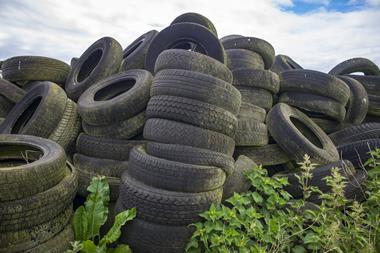The Royal Society of Chemistry (RSC) is calling on the UK government to reduce the current cap on individual per- and polyfluoroalkyl substances (PFAS) in drinking water from 100ng/l to 10ng/l, warning that levels above this pose a significant risk to public health.
The RSC’s call follows new analysis revealing that more than a third of water courses tested in England and Wales contain medium or high-risk levels of PFAS, which have been linked to a range of serious adverse health conditions including testicular cancer, thyroid disease and liver damage.
As part of its #CleanUpPFAS campaign, launched today, the RSC is also calling on the government to ensure the many hundreds of types of PFAS are reported and captured in a national inventory, to impose stricter regulatory limits on allowable levels of PFAS in industrial discharges and to develop plans for a national chemicals regulator to provide better strategic coordination.
It also asks for the government to establish new statutory action standards for PFAS in drinking water with a maximum concentration of 10ng/l per single PFAS and 100ng/l for the overall summed concentration of all PFAS. The RSC has also launched an interactive map, using data from The Forever Pollution Project, to allow people to examine PFAS levels in their local waterways and is calling on people to write to their MP to demand change and stricter statutory drinking water standards.
Stephanie Metzger, policy adviser at the RSC, said the UK was lagging ‘far behind’ the US and the EU when it comes to the amount of PFAS allowed in drinking water and ‘what is considered healthy’. The US is introducing a limit of 4ng/l for two of the most common PFAS types and the EU’s Drinking Water Directive states that 20 widespread PFAS must collectively not exceed 100ng/l in total.
‘We know that PFAS can be filtered from drinking water – the technology exists, so increasing the level of filtration is just a matter of expense and political will,’ she said. ‘In the Drinking Water Inspectorate’s [DWI’s] own words, levels above 10ng/l pose a medium or high risk to public health. We’re seeing more and more studies that link PFAS to a range of very serious medical conditions, and so we urgently need a new approach for the sake of public health.’
Metzger highlighted that PFAS do have an ‘important role’ to play in society with applications in batteries, protective clothing for firefighters and medical devices.
‘We just need to make sure PFAS are handled appropriately during manufacturing, disposed of safely and filtered out of our drinking water, so that we can keep all the benefits without the adverse side effects, and a National Chemicals Agency could be key to helping achieve this,’ she added.
Patrick Byrne, a hydrology and environmental pollution researcher at Liverpool John Moores University, says that the removal of PFAS from UK drinking water is a ‘major challenge’ for the government and the water industry as current treatment technologies are largely ineffective. ‘If a legally enforceable limit of 10ng/l per single PFAS like [perfluorooctanesulfonic acid (PFOS)] and [perfluorooctanoic acid (PFOA)] were to come into force, then most effluent from drinking water treatment plants would fail to meet this target because of the difficulty of removing these compounds from our water,’ Byrne explains. ‘Furthermore, only long-chain PFAS compounds, PFOS and PFOA, have been routinely tested in drinking water and water treatment plants. Other short-chain PFAS compounds like [perfluorobutanoic acid] and [perfluorobutanesulfonic acid] are even more difficult to remove from our water than PFOS and PFOA. Although several emerging technologies show the potential to remove PFAS from water, the cost could be enormous. The UK Water Industry Research group recently estimated that almost £20 billion would be required to upgrade water treatment plants in the UK and Northern Ireland to satisfactorily remove PFAS from our drinking water.’
‘I support the RSC #CleanUpPFAS campaign to reduce the current DWI PFAS drinking water quality standards to protect the UK population from a very harmful chemical,’ Byrne adds. ’But, there will be a very substantial cost to maintaining clean and safe drinking water that the UK population must be prepared to endure. The risk if we don’t is that we are creating a future where PFAS-related health problems are serious and widespread, and the potential cost of that future to society must be factored into government decision making now.’
Joanne Roberts, a research fellow at Glasgow Caledonian University who has conducted work on PFAS breakdown in the environment, also welcomed the RSC’s campaign to reduce PFAS limits. ‘Given the number of PFAS in circulation and the substitutes for PFOA and PFOS being equally as persistent it is essential to include an overall limit of 100ng/l for a total amount of PFAS,’ she says.
‘Drinking water standards in England are of an exceptionally high standard and are among the best in the world,’ said a spokesperson for the Department for Environment, Food and Rural Affairs (Defra). ‘Water companies are required to carry out regular risk assessments and sampling for any substance – including PFAS – that they believe may cause the water supply to pose a risk to human health.’
Defra noted that current testing regimes require water companies to monitor a minimum of 47 different PFAS. It added that the 100ng/l limit that is enforced by the DWI is in line with guidelines for PFOS and PFOA produced during a recent World Health Organization (WHO) consultation. The WHO has not released any official guideline values for PFAS.

















No comments yet